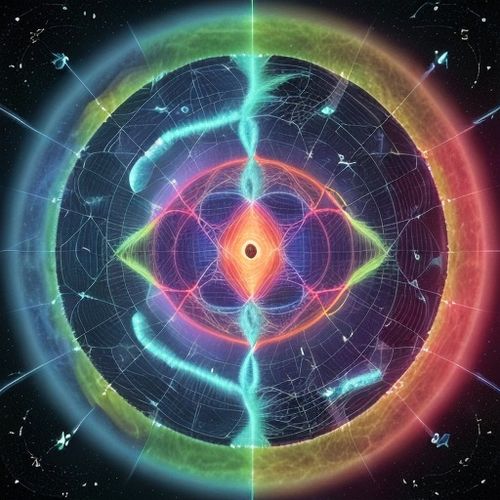The idea that humans might possess a "sixth sense" has long captivated scientists and the public alike. While extrasensory perception remains firmly in the realm of pseudoscience, recent discoveries about magnetoreception—the ability to detect magnetic fields—have reignited debates about hidden sensory capabilities in our species. A groundbreaking study revealing the presence of magnetosensitive proteins in the human eye suggests we may harbor biological machinery for sensing Earth's magnetic field, much like migratory birds and sea turtles.
A Molecular Compass in Our Eyes?
In 2019, researchers at the University of Tokyo made an astonishing discovery while studying the retina. They identified cryptochrome 2, a light-sensitive protein previously known to enable magnetoreception in animals, nestled within the ganglion cells of the human eye. These retinal cells, typically responsible for transmitting visual information to the brain, were found to contain the same molecular structure that allows European robins to navigate using Earth's magnetic field during their epic migrations.
The implications are profound. Cryptochromes function through quantum biological processes—when exposed to blue light, they form radical pairs of electrons whose spin states are influenced by magnetic fields. This creates a chemical compass that some animals use for orientation. The presence of these proteins in humans doesn't necessarily mean we can consciously detect magnetic fields, but it suggests our biology might retain evolutionary remnants of such capability.
Ancestral Echoes or Functional System?
Evolutionary biologists propose two compelling explanations for why humans might retain magnetosensitive proteins. The conservative view suggests these are simply evolutionary leftovers from ancestors who relied on magnetoreception for navigation, much like the vestigial tailbone we retain from tailed predecessors. The more radical interpretation posits that we may still use this system subconsciously, with magnetic information influencing our spatial awareness or circadian rhythms without rising to conscious perception.
Intriguingly, behavioral studies lend some credence to the latter view. Experiments where participants' brain waves were monitored in controlled magnetic fields showed distinct neural response patterns, particularly in the right hemisphere. When the vertical component of the magnetic field was inverted—simulating travel across hemispheres—subjects exhibited measurable changes in resting brain activity, though none reported conscious awareness of the shifts.
The Blind Compass Hypothesis
Neurologists have coined the term "blind compass" to describe how magnetosensitive signals might bypass conscious perception. Unlike visual or auditory information that reaches our awareness, magnetic data could be processed at subconscious levels, perhaps influencing spatial memory or directional intuition. This would explain why some people demonstrate uncanny navigational abilities even in unfamiliar environments without visual cues.
The retinal ganglion cells containing cryptochrome 2 project to the hypothalamus, a brain region governing biological rhythms and spatial memory, rather than to visual processing areas. This neural wiring suggests magnetic information might modulate our internal clock or contribute to cognitive maps of our surroundings without generating conscious magnetic "sensations."
Modern Life's Magnetic Interference
If humans do possess latent magnetoreception, modern technology might be drowning it out. The proliferation of electromagnetic noise from power lines, electronic devices, and urban infrastructure creates chaotic magnetic environments that could overwhelm any subtle biological compass. Some researchers speculate this sensory pollution might contribute to modern disorientation—both literal and metaphorical—though such claims remain speculative.
Laboratory experiments under controlled conditions show that weak magnetic fields, comparable to Earth's natural geomagnetic field, can influence human brain activity. EEG recordings reveal distinct alpha wave patterns when magnetic north is rotated around stationary subjects, suggesting our nervous systems respond to magnetic changes even if we don't consciously perceive them.
Future Directions in Sensory Biology
The discovery of magnetosensitive proteins in humans opens new frontiers in sensory research. Scientists are now developing non-invasive methods to test magnetoreception, including virtual reality navigation challenges combined with controlled magnetic field manipulation. Other teams are investigating whether cryptochrome 2 variants correlate with navigational aptitude across different populations.
Perhaps most tantalizing is the potential to harness this biological compass. If we can understand how cryptochromes translate magnetic information into neural signals, we might develop technologies to enhance human spatial awareness or treat conditions involving disorientation. The military and aerospace industries have shown particular interest, funding research into whether magnetic sensitivity could be trained like any other sense.
While the existence of a human "sixth sense" remains unproven, the building blocks for magnetoreception clearly exist within our biology. Whether these represent functional systems or evolutionary artifacts, they remind us how much remains to be discovered about human perception. As research continues, we may find that our sensory world extends beyond the traditional five senses in ways we're only beginning to comprehend.

By Emily Johnson/Apr 10, 2025

By John Smith/Apr 10, 2025

By Christopher Harris/Apr 10, 2025

By Noah Bell/Apr 10, 2025

By Rebecca Stewart/Apr 10, 2025

By Victoria Gonzalez/Apr 10, 2025

By Amanda Phillips/Apr 10, 2025

By Emma Thompson/Apr 10, 2025

By Lily Simpson/Apr 10, 2025

By Emma Thompson/Apr 10, 2025

By Sophia Lewis/Apr 10, 2025

By Rebecca Stewart/Apr 10, 2025

By Noah Bell/Apr 10, 2025

By Sophia Lewis/Apr 10, 2025

By Christopher Harris/Apr 10, 2025

By Eric Ward/Apr 10, 2025

By Daniel Scott/Apr 10, 2025